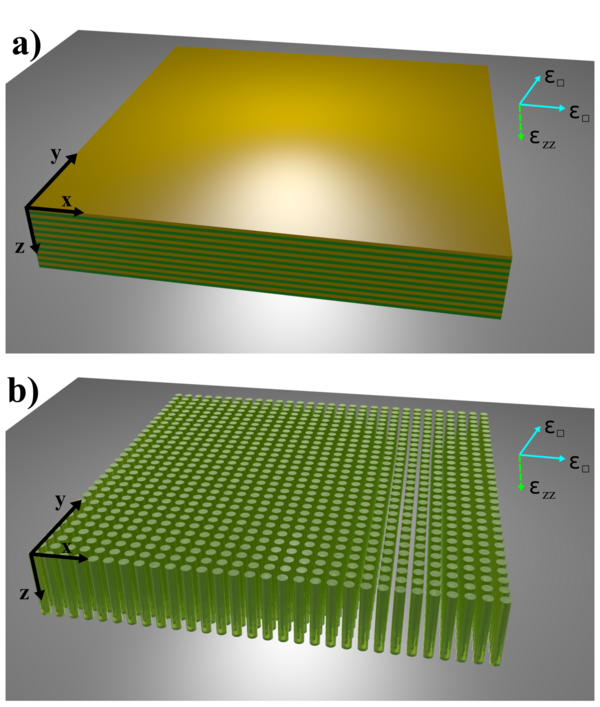LabAdviser/Technology Research/Nanoscale characterization of ultra-thin metal films for nanofabrication applications: Difference between revisions
| Line 8: | Line 8: | ||
==Project Description== | ==Project Description== | ||
[[image:HMM_implementation_topology.png|600px|thumb|Figur 1. Schematics of (a) a multilayer and (b) a nanowire hyperbolic metamaterial.]] | |||
The aim of this Ph.D. project is to obtain a deeper understanding of the interaction at the nanoscale level between ultra-thin metal films used in micro/nanofabrication, exploiting the unique capabilities of thin-film fabrication and characterization offered by the combination of the DTU Danchip/Cen facilities. | The aim of this Ph.D. project is to obtain a deeper understanding of the interaction at the nanoscale level between ultra-thin metal films used in micro/nanofabrication, exploiting the unique capabilities of thin-film fabrication and characterization offered by the combination of the DTU Danchip/Cen facilities. | ||
Revision as of 14:52, 12 January 2018
Feedback to this page: click here
Nanoscale characterization of ultra-thin metal films for nanofabrication applications
- Project type: Ph.D. project
- Project responsible: Matteo Todeschini
- Supervisors: Jakob Birkedal Wagner, Flemming Jensen, Anpan Han
- Partners involved: DTU Danchip/Cen
Project Description

The aim of this Ph.D. project is to obtain a deeper understanding of the interaction at the nanoscale level between ultra-thin metal films used in micro/nanofabrication, exploiting the unique capabilities of thin-film fabrication and characterization offered by the combination of the DTU Danchip/Cen facilities.
With the constant miniaturization of the devices and the fabrication of increasingly complex multi-material structures, the interaction between different ultra-thin layers has gained considerable importance in the field of thin-film science and technology in recent years. Therefore the characterization of such interactions in a wide range of temperatures and the description of their impact on the chemical composition, morphology and distribution of crystallographic orientations of multilayer thin-films is of utmost importance.
The project focuses in particular on the description of the interaction between noble metal films, widely used in different areas of micro- and nanofabrication, and extremely thin films of reactive transition metals, used to enhance adhesion onto the substrate - and thus referred as ``adhesion layers". Different material and multilayer combinations are investigated; particular emphasis is placed on the description and use of the recently developed transmission Kikuchi diffraction technique for the in-situ study of thin-film nanostructure evolution with changing chemical composition and temperature.
